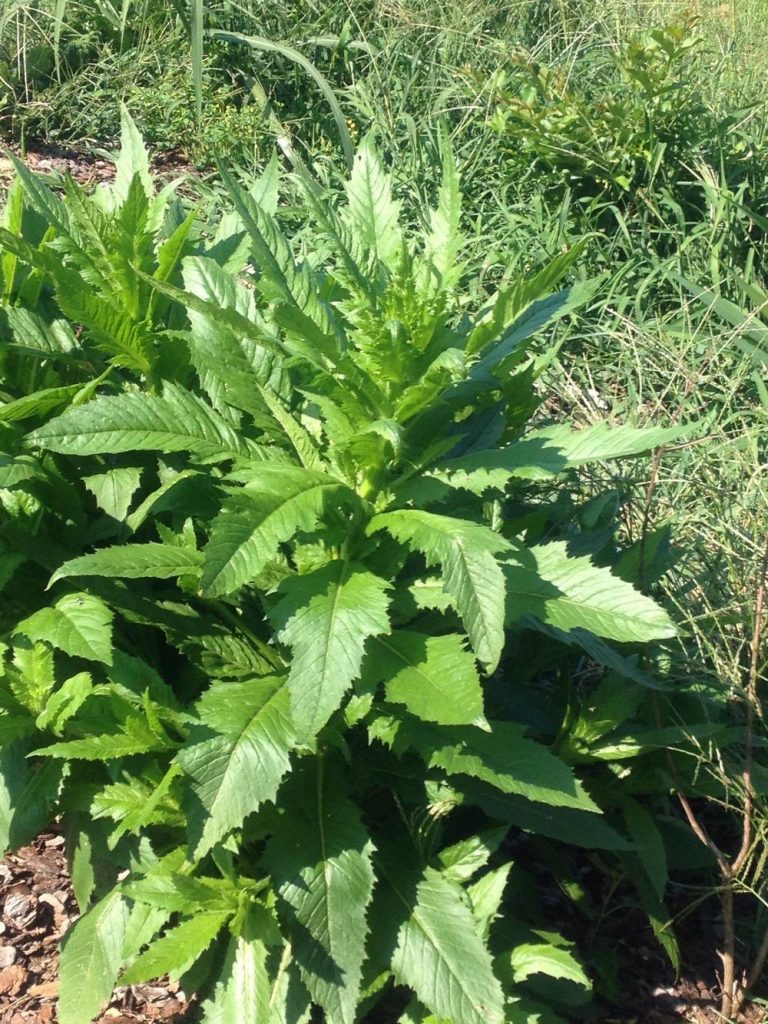
With an impossible scientific name and strong aroma Fireweed is often over looked by the foraging community. Conversely the aroma is also a good identifying characteristic. As with several things in life tastes vary and many people enjoy the Fireweed raw or cooked. Closely related to the Dandelion, the Fireweed locally favors the late winter or early spring. Currently you can find Fireweed from a few inches high to a couple of feet. While they do not grow in colonies often several will grow near each other. Soon the older ones will put on yellow blossoms that barely open, another identifying characteristic. Of course in greens young and tender is usually preferable and this is particularly true with the Fireweed which grows rank as it ages. To read about fireweed go here.
It’s unusual to smell Mayflowers in March. At least that’s what I thought in 1977. I moved from Maine to Florida in January of that year to forever escape the cold and ice… perhaps prophetically it snowed in Florida the day I arrived. What a welcoming present. And then in March I smelled Mayflowers but they weren’t Mayflowers: It was citrus blossoms. To my nose the aromas are very similar though I doubt I could ever get a Mayflower and a citrus blossom together to compare. Mayflowers blossom in May, at least in New England.
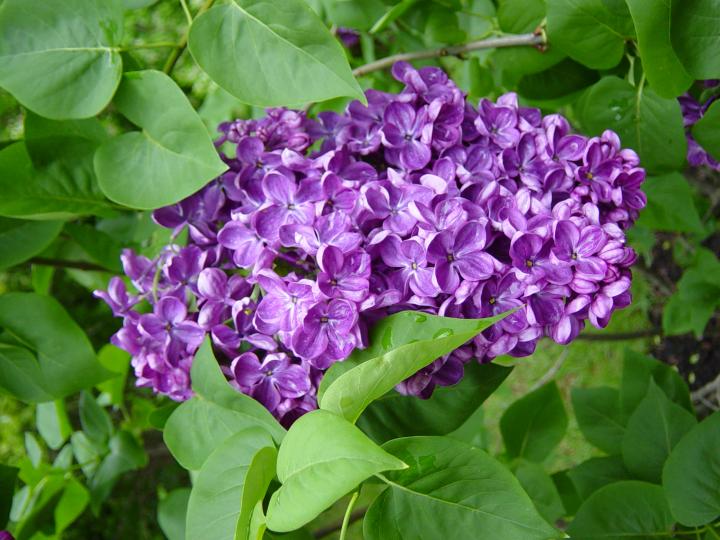
My springtime as a youth was measured by three plants: Pussy Willows, Mayflowers and Lilacs. Lilacs always blossomed about two weeks before school let out for the summer, usually in early June. Exactly when that was depended on how many snow days we took off from school that year. A few snow days were always built into the school calendar so the last day of school varied. But, we did get three months off for the summer going back to school the Tuesday after Labor Day. Nearly everyone had at least one Lilac planted in their yard. They won’t grow in warm Florida so Crape Myrtles are the landscaping substitute.
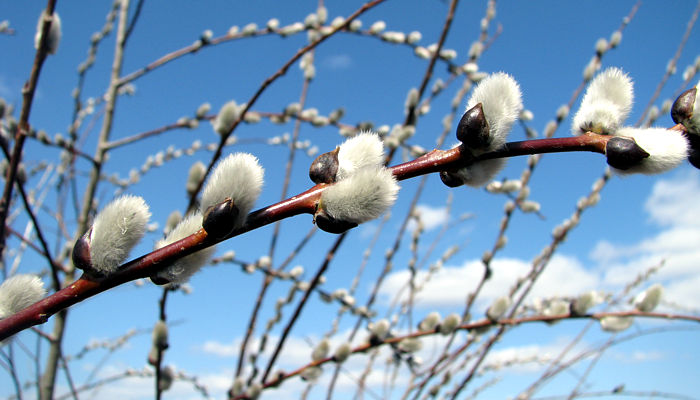
First to “blossom” in the spring were Pussy Willows so called because the blossom can remind someone with an imagination of the pads on cat feet. They were always out even when there wasn’t green leaf to be seen or there was still some snow here and there. The skinny bush grew at the end of our driveway near oaks. Mildly medicinal and a famine food, when you saw Pussy Willows (Salix discolor) winter might not be over but the end was in sight. Interestingly I can buy Pussy Willows locally in Florida in the spring as they are imported for decorating.
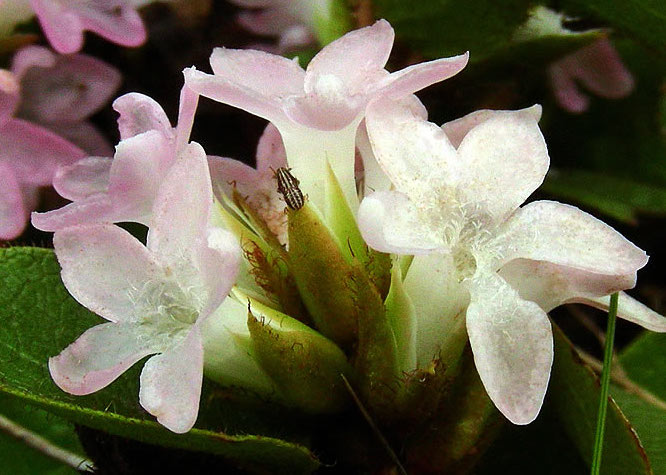
Pussy Willows were followed by Mud Season, six weeks of mucky misery missed by areas where the ground does not freeze in the winter. Mud Season is when the frost in the ground melts during the daytime making dirt roads impassible as mires of mud. Then it freezes into ruts at night making them rough but passible in the morning until the sun warms the overnight ice to mud again. That’s also when we’d go picking Mayflowers on local hills and mountains. The normally green slopes would be covered with leafless trees making the rocks easier to see when walking. And the Mayflowers would be in the leaf litter and on mossy rocks.
My mother picked Mayflowers because her mother did because her mother did and so forth on back no doubt. Yet somewhere along the line the part about them being edible must have been forgotten, not mentioned, or became secondary to their fragrant statement of spring. My mother said she liked to pick them because they were the first spring flower and sign the winter was over. No doubt some hungry people thought the same about them in the past. And perhaps because they were edible Mayflowers were also the only flower my mother would allow in the house. She had a superstition about cut flowers inside the house and folks dying. She raised all kinds of flowers around the house but none were allowed inside. Somehow wild Mayflowers were excluded from that ban. You can read about them here.

Foraging classes: We walked long this past weekend with a class at Haulover Canal, always an interesting area but about four miles total. This weekend the classes cover half the distance, Wickham Park in Melbourne Saturday, slight chance of rain, and a stroll around Red Bug Slough in Sarasota Sunday.
Saturday March 16th, Wickham Park: 2500 Parkway Drive, Melbourne, FL 32935-2335. 9 a.m. to noon. Meet at the “dog park” inside the park.
Sunday, March 17th, Red Bug Slough Preserve, 5200 Beneva Road, Sarasota, FL, 34233. 9 a.m. to noon.
Saturday, March 23rd, Blanchard Park, 10501 Jay Blanchard Trail, Orlando, FL 32817. Meet near the tennis court near the YMCA building. 9 a.m. to noon.
Sunday, March 24th, Bayshore Live Oak Park, Bayshore Drive. Port Charlotte. 9 a.m. to noon. Meet at the parking lot at the intersection of Bayshore Road and Ganyard Street.
Sunday, March 31st, Dreher Park, 1200 Southern Blvd., West Palm Beach, 33405. 9 a.m. to noon, met just north of the science center.
Saturday, April 6th, Florida State College, south campus, 11901 Beach Blvd., Jacksonville, 32246. 9 a.m. to noon. We will meet at building “D” next to the administration parking lot.
Saturday, April 27th, Red Bug Slough Preserve, 5200 Beneva Road, Sarasota, FL, 34233. 9 a.m. to noon.
For more information about the foraging classes go here.
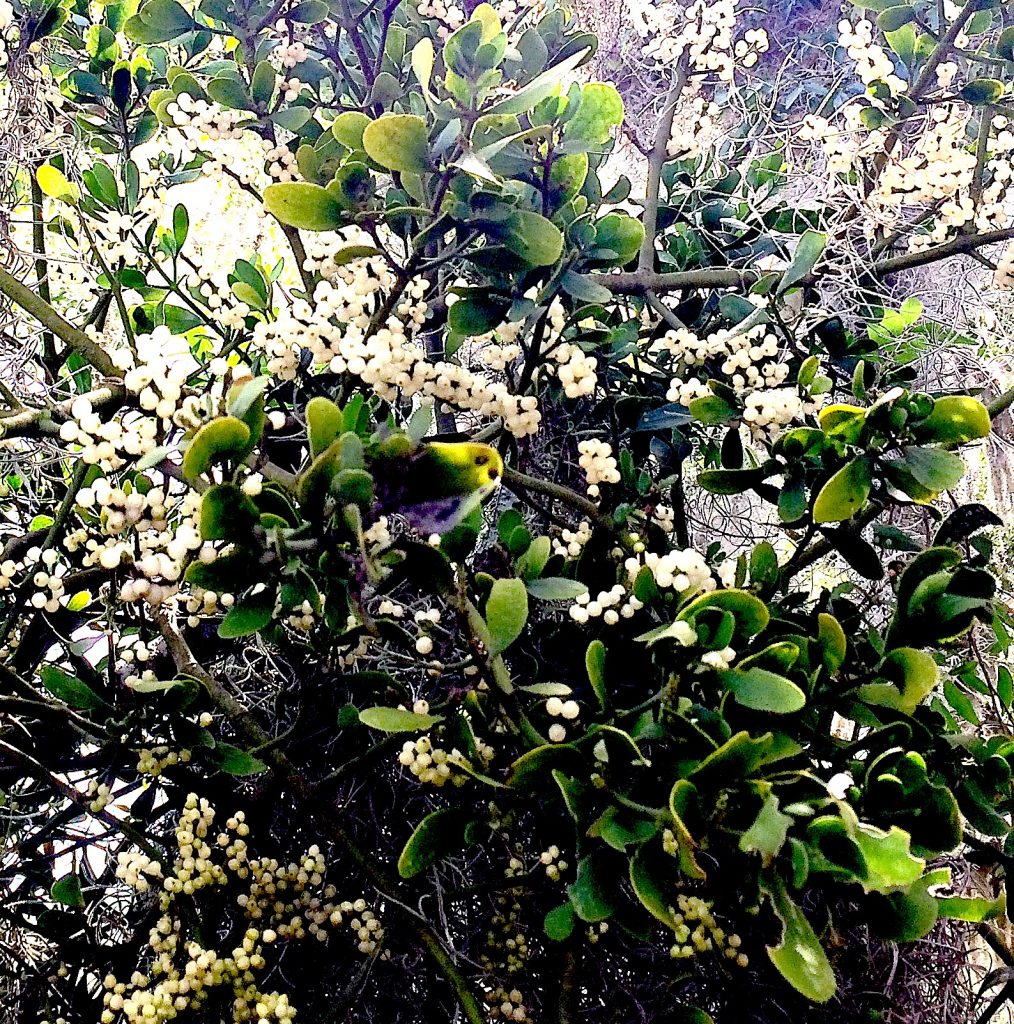
Mistletoe is toxic. But with many plants what is exactly toxic, medicinal or even edible can get blurry. Perhaps best is the old medical school adage: A poison is dose, time and host response. When used judiciously by those who know what they are doing Mistletoe is said to be medicinal. Every year around this time when I see fruiting Mistletoe I am reminded of an experience I had a few years ago. I was teaching at a conference and saw a good specimen of Mistletoe I thought my students would like to see. Later I saw an herbalism teacher eat a white berry from that Mistletoe and one leaf. She said it was an adaptogen adjusting itself to whatever your needs were. She was also teaching the next day. So while I still view it as toxic and tell folks not to eat it I can say I have seen someone eat a berry and a leaf and survive. I have also seen someone eat Poison Ivy and Brazilian Pepper berries. I do not recommend either.

Want to identify a plant? Looking for a foraging reference? Do you have a UFO, an Unidentified Flowering Object you want identified? On the Green Deane Forum we chat about foraging all year. And it’s not just about warm-weather plants or just North American flora. Many nations around the world share common weeds so there’s a lot to talk about. There’s also more than weeds. The reference section has information for foraging around the world. There are also articles on food preservation, and forgotten skills from making bows to fermenting food. One special section is “From the Frightening Mail Bag” where we learn from people who eat first then ask questions later. You can join the forum by clicking on “forum” in the menu.

All My Videos are available for free on You Tube. They do have ads on them so every time you watch a Green Deane video I get a quarter of one cent. Four views, one cent. Not exactly a large money-maker but it helps pays for this newsletter. If you want to see the videos without ads and some in slightly better quality you can order the DVD set. It is nine DVDs with 15 videos on each for a total of 135 videos. Many people want their own copy of the videos or they have a slow service and its easier to order then to watch them on-line. The DVDs make a good gift for that forager you know especially on long, cold winter months. Individual DVDs can also be ordered or you can pick and choose. You can order them by clicking on the button on the top right hand side of this page (if your window is open wide enough.) Or you can go here.

Donations to upgrade EatTheWeeds.com have gone well. Thank you to all who have contributed to either via the Go Fund Me link, the PayPal donation link or by writing to Green Deane POB 941793 Maitland FL, 32794. There are many needs left such as expanding the foraging teacher page and the page on monotypic edibles. I’m still having a hard time finding articles I wrote! There’s always something and such things get more complex and expensive every year. Indeed, the average email cost to send each newsletter is $20.
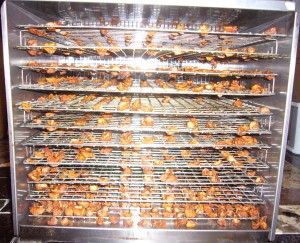
Some fruits dehydrate well, others do not. Mulberries , which will be fruiting soon, are an example of a fruit that is less interesting when dry. Dehydrating is a way to preserve the fruit and there’s nothing wrong with that. But Mulberries loose flavor and much texture in the drying process. They are far better fresh or as confections or jelly and jam. Plums are a fruit that don’t lose anything in the drying process but in becoming prunes do change flavor and texture. Loquat are similar. Drying them creates a different product but they’re still tasty and interesting. The question is what to call these dried loquats? Dryquats? Sunquats? Squats? We are in the middle of loquat season here in Central Florida and my dehydrator is working day and night. It’s an industrial brute of stainless steel and despite descriptions to the contrary it is not quiet. In the photo, above left, 16 pounds of seeded loquats coming out of the dehydrator reduced to three pounds. If you want to read more about loquats go here. To see a short video on them click here.
If you would like to donate to Eat The Weeds please click here. Or you can use my Go Fund Me link, or by writing to Green Deane POB 941793 Maitland FL, 32794
This is weekly issue 346.



I thought it was lovely that you took the time to remember your Mother as they play such an important and memorable part in our lives.